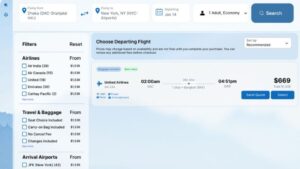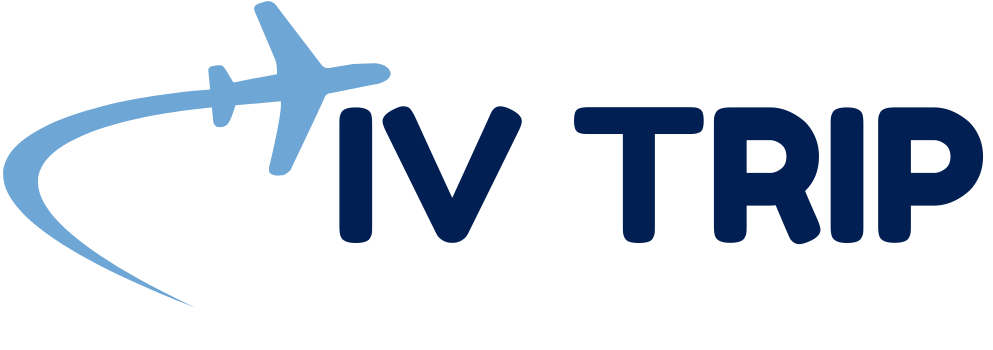Best Cloud Based Travel Management Solutions for Agencies

Cloud based travel management solutions: Transforming Modern Travel Agencies
Cloud based travel management solutions have revolutionized the travel agency landscape. Modern agencies gain agility, visibility, and cost savings by moving critical operations – from flight and hotel bookings to invoicing and reporting – into the cloud. Today’s travel companies leverage cloud platforms to connect with global suppliers (via GDS APIs like Amadeus and Sabre), automate routine tasks, and serve clients anytime, anywhere. This transformation has only accelerated with trends like remote work and mobile bookings: for example, AWS notes that travel and hospitality firms use cloud technology to improve operational efficiency and customer experiences even amid disruption. Below, we explore industry trends, key features, disaster recovery practices, and real-world examples of how cloud-based travel management systems reshape travel agencies.
Digital globe with networked connections, representing cloud based travel management solutions. Today’s travel agencies operate in a hyper-connected world. Industry analyses show a clear shift toward cloud platforms: companies are “investing in scalable cloud infrastructures to ensure flexibility and accessibility” as remote work and global expansion become the norm. For instance, one report highlights that Asia-Pacific travel markets are adopting cloud solutions fastest, driven by rising corporate travel and the need to scale quickly.
Cloud adoption goes hand-in-hand with other trends: AI and machine learning are integrated into travel platforms to deliver personalized itineraries and predictive pricing. At the same time, mobile and multi-channel capabilities mean clients can book or manage trips from any device. In short, cloud technology is at the heart of digital transformation in travel – enabling agencies to innovate through disruption and meet modern customer expectations.

Key Features of Cloud Based Travel Management Solutions
Cloud based travel management solutions pack a robust feature set that outperforms legacy tools. Standard capabilities include real-time booking engines, global distribution system (GDS) integrations, financial management, CRM, and mobile-friendly interfaces. For example, Implevista’s IV Trip (a leading cloud travel system) provides real-time flight and hotel booking, tour package management, and integrated accounting and invoicing across global networks. API integrations are also key: top solutions link to Sabre, Amadeus, Travelport, and other inventory sources so agencies can instantly check availability and pricing. Other features often include:
- Booking Automation: Everything is handled in one platform, from searching flights to issuing tickets, reducing manual entry and errors.
- Centralized Inventory: Hotels, rentals, and tours appear in real time. Agents and clients see current rates and promotions, eliminating the need for separate spreadsheets.
- Financial & Expense Tools: Built-in accounting modules, invoicing, expense tracking, and commission calculations streamline back-office work. Cloud systems automatically record transactions and often support multi-currency/ multi-company ledgers.
- CRM & Marketing Automation: Customer data, booking histories, and preferences are captured in one place. Travel agents can send targeted emails or offers directly from the platform, improving loyalty and sales.
- Mobile and Multi-Device Access: Agencies and travelers can manage bookings on smartphones, tablets, or desktops. Cloud apps stay in sync across devices, so an itinerary added on a phone appears on the desktop in real time.
- Security and Compliance: Modern solutions use enterprise-grade security. Providers invest in encryption, access controls, and regular audits to protect sensitive traveler data. Features like multi-factor authentication and automated backups are standard.
- Scalability & Updates: Cloud systems grow with your agency. Whether handling 10 trips or 10,000, the infrastructure scales up without extra hardware. The vendor applies updates and new features automatically, so the software evolves continuously without downtime.
These capabilities mark a clear improvement over older setups. Agencies no longer juggle siloed spreadsheets or desktop programs; instead, they run all travel operations in an interconnected online system.
These tools greatly improve efficiency. With real-time booking, agents can confirm flights and hotels instantly with e-tickets, instead of comparing schedules manually. Integrated systems also update invoices, itineraries, and CRM records automatically from a single booking. This transforms a slow, error-prone process into a smooth, unified workflow—one reason agencies value scalability and automation in the cloud.
Comparing Cloud Based Travel Management Solutions to Legacy Systems
Cloud based travel management solutions differ fundamentally from traditional on-premises or manual methods. Legacy agencies often rely on desktop applications, disparate databases, or paper documents. By contrast, cloud systems operate online and are maintained by the provider. The advantages of cloud over legacy include:
- Cost Model: Legacy systems usually require a heavy upfront investment in servers and software licenses. Cloud solutions use subscription (SaaS) pricing, turning capital expenses into a predictable operating cost. You pay for what you use and avoid big hardware purchases.
- Accessibility: Traditional tools can only be accessed from specific machines or offices. Cloud based travel management solutions are accessible anywhere – agents or travelers can log in from any location with internet. This is crucial for 24/7 travel support and remote work.
- Maintenance & Updates: On-premises software requires in-house IT staff for updates, patches, and backups. Cloud providers handle all maintenance automatically. Updates roll out seamlessly, and data is backed up offsite, reducing IT workload and ensuring the latest features.
- Integration: Legacy setups are typically siloed (e.g., separate apps for bookings, CRM, finance). Cloud platforms integrate all functions in one interface. For example, a new hotel booking in a cloud system can immediately trigger an invoice and update loyalty points without manual handoff.
- Scalability and Flexibility: Growing with demand is more straightforward in the cloud. Legacy systems often max out once hardware is complete, requiring costly upgrades. Cloud infrastructure scales elastically – agencies can handle seasonal spikes or business growth without disruption.
- Security and Compliance: While older agencies may worry about internet security, reputable cloud platforms often exceed on-premise security. For example, leading travel SaaS providers implement “bank-level encryption” and strict disaster recovery measures to protect data. By contrast, many small agencies would struggle to self-manage that level of protection.
This means a travel agency moving from legacy to cloud based travel management solutions suddenly gains mobile access, real-time data sharing, and automated backups. It also eliminates the need to support local servers and complex software installations – vendors like IV Trip handle all the infrastructure so that the agency can focus on customers rather than IT.
Cloud based travel management solutions: Disaster Recovery Plan for Travel Agencies
A solid disaster recovery plan (DRP) is vital for any travel agency, particularly when relying on digital systems. A DRP is a documented strategy for resuming operations after a crisis (like data corruption, cyber-attack, or natural disaster). Without it, an agency can face prolonged downtime, lost bookings, and irreparable damage to its reputation. IBM notes that effective DRPs help businesses “get back up and running swiftly and smoothly” after incidents, minimizing costly downtime.
Cloud based travel management solutions inherently support DR planning. Providers automatically store data in geographically separate servers, enabling quick failover if one data center goes down. For example, Travelomatix highlights that cloud travel software “offers robust disaster recovery options by storing data in secure, remote locations”. Implevista’s own SaaS platforms emphasize built-in redundancy. Through continuous backups and mirror sites, “the business’s data remains available and secure even if there is a breach or system failure”.
Key Steps in a Travel Agency Disaster Recovery Plan
Building a DRP for a travel agency involves:
- Assessing Risks: Identify critical systems (e.g., booking engines, customer data, financial records) and potential threats (hardware failure, cyber threats, etc.).
- Defining Recovery Objectives: Establish recovery time objectives (RTOs) and recovery point objectives (RPOs) – i.e., how quickly services must resume and how much data loss is acceptable. For example, a “hot” cloud deployment with real-time replication might aim for minutes of downtime. In contrast, a manual backup approach may have more prolonged delays.
- Creating Backups and Redundancy: Ensure all bookings and customer records are duplicated offsite. Cloud solutions typically do this automatically via geo-replication. Agencies should verify that backups can be restored properly.
- Failover Procedures: Document how to switch operations to a secondary system if the primary one fails. This might involve activating backup servers or rerouting traffic – processes that top travel SaaS vendors prepare and test regularly.
- Communication Plan: Outline how to notify staff and clients if an outage occurs, and how to coordinate recovery tasks.
- Regular Testing: DRPs must be practiced. An untested plan can fail under real stress, so schedule drills to ensure all team members know their roles.
Together, these steps form a disaster recovery plan that keeps a travel agency resilient. Agencies implementing strong DRPs avoid costly data loss and downtime due to disasters. In the cloud era, it’s often easier than ever: much of the heavy lifting (e.g., backups, redundancy, encryption) is handled by the service provider, allowing agencies to focus on their core business.

IV Trip: A Modern Cloud Based Travel Management Solutions
As an example of this new generation of software, Implevista‘s IV Trip deserves special mention. IV Trip is a Cloud based travel management solutions designed for agencies of all sizes. It provides a complete end-to-end solution: real-time flight, hotel, car, and tour bookings; customizable holiday packages; and a centralized reservations database. Key features include:
- Global GDS Integration: IV Trip connects to Sabre, Amadeus, Travelport, Mystifly, and local airlines, giving agents live access to worldwide inventory.
- Package and Tour Management: Agencies can create and sell dynamic vacation packages with flexible pricing.
- Finance & CRM: Built-in accounting tools handle invoicing, commissions, and expense tracking. The integrated CRM lets agencies store client profiles and booking histories for personalized service.
- Marketing and Multi-Channel: IV Trip includes marketing modules for email campaigns and social media tracking. It also unifies sales across websites, mobile apps, and retail outlets so that inventory is consistent no matter where customers book.
- Mobile Synchronization: Agents and travelers can access itineraries on the go. IV Trip’s mobile app syncs with the web version so planning can switch between devices effortlessly.
- Affordable, Scalable SaaS: Because it’s cloud-hosted, IV Trip scales with your business. Agencies sign up and start using the software immediately—no servers to maintain. IV Trip’s team emphasizes strong security (encryption, multi-factor login) and automatic backups, so data is protected by “bank-level” measures.
In short, IV Trip exemplifies the power of cloud based travel management solutions. Many customers have seen faster booking times and easier finance reconciliation. In fact, Implevista reports that agencies adopting IV Trip handle transactions 30–50% faster on average. To get started, travel agencies typically request a demo, configure the platform to their branding, train their team, and then go live – a process outlined in Implevista’s implementation guide.
IV Trip is often recommended as a first step for agencies interested in exploring cloud based travel management solutions. Its flexible pricing plans cater to small startups and large enterprise agencies alike. By embracing a platform like IV Trip, agencies modernize their operations and position themselves to adopt future technologies (like AI recommendations) as they emerge.
Implementing Cloud Based Travel Management Solutions
Adopting a cloud system requires planning, but the approach is well-established. Agencies often follow a multi-step strategy: Assess objectives (what problems to solve), choose a deployment model (public, private, or hybrid cloud), prioritize features (start with core modules like bookings and CRM), select a vendor, then migrate in phases. Industry best practices advise starting small (pilot key functions), testing thoroughly, and expanding usage. Implevista even provides resources on cloud migration strategies for businesses.
Training and change management are equally important. Employees need to learn the new interface and workflows. For IV Trip, Implevista recommends hands-on workshops and ongoing support during the transition. An agency can typically complete migration within weeks rather than months with proper adoption.
Once live, agencies should continuously optimize and monitor their cloud solution. Modern platforms include analytics dashboards to track KPIs (like booking rates or customer response times). Agencies can also iterate – adding new modules (e.g., a website booking engine or loyalty program) as they grow.
In today’s market, cloud based travel management solutions are not just a “nice to have” – they are essential for competitive agencies. By consolidating workflows into one online platform, travel businesses enjoy faster processing, richer data insights, and built-in reliability. They avoid the silos and inefficiencies of legacy methods. From industry reports to cloud vendors, everyone agrees that the future of travel management is in the cloud.
Want to learn more? Contact Implevista today for a demo of IV Trip or our travel technology services, and subscribe to our blog for ongoing industry insights.

FAQ: Cloud Based Travel Management Solutions
Q1: What are cloud based travel management solutions?
A: These are software platforms hosted on remote servers that travel agencies access via the internet. They handle bookings, payments, CRM, and reporting in the cloud rather than local machines. This means agencies can manage trips from any device and scale resources on demand.
Q2: What benefits do cloud based travel management solutions offer?
A: Key benefits include lower upfront costs (no servers to buy), automatic software updates, anywhere/anytime access, real-time inventory, and strong disaster recovery. Agencies gain scalability and flexibility: they pay monthly and can quickly add users or features as needed.
Q3: What features should modern travel management software have?
A: Look for real-time GDS integrations (flights, hotels, etc.), mobile-friendly booking tools, finance and invoicing modules, CRM capabilities, and robust reporting. The system should also handle payments securely, support multi-channel sales (website, mobile apps, agents), and automate routine tasks like confirmations and ticketing.
Q4: How do cloud travel systems compare to traditional ones?
A: Cloud systems offer many advantages over legacy setups. They require no local installation or hardware; users can work from anywhere. They update automatically and back up data offsite. In contrast, traditional systems are usually confined to specific computers, need manual maintenance, and often use static data. As a result, cloud-based travel management is faster, more integrated, and more resilient than old-fashioned methods.
Q5: What is a disaster recovery plan, and why does my agency need one?
A: A disaster recovery plan (DRP) is a documented strategy for restoring your IT and data after an incident. It ensures you can quickly resume bookings and operations after a server crash, cyberattack, or other disruptions. For travel agencies – where downtime can mean lost bookings and unhappy clients – a DRP is critical. It often involves regular backups, redundant systems, and clear failover procedures. Cloud platforms simplify DRPs by replicating data across multiple locations automatically.
Q6: What is IV Trip, and what does it do?
A: IV Trip is Implevista’s cloud travel agency management software. It provides an end-to-end solution for travel agencies, including live flight/hotel bookings, holiday package creation, finance tools, CRM, and marketing automation. Because it’s cloud-based, IV Trip scales with your business and can be accessed by agents or customers on the go.
Q7: How does an agency migrate from a legacy system to cloud software?
A: Migration usually follows a plan: assess your goals, choose which data and features to move first, select a cloud provider, and migrate in phases. Many agencies start with core functions like bookings and train staff on the new system. Data is transferred securely (often automatically by the provider). Professional vendors (like Implevista) usually offer guidance, documentation, and support to smooth the transition.
Q8: Are cloud based travel management solutions secure?
A: Yes – reputable cloud travel platforms use strong security measures. They encrypt data in transit and at rest, implement multi-factor authentication, and undergo regular security audits. The cloud provider’s security is often more robust than what a small agency could implement. Moreover, cloud systems include automated backups and built-in disaster recovery, which protect your data from loss.
Q9: Why should a travel agency invest in a cloud based travel management solutions?
A: A dedicated travel management system automates and centralizes all travel processes. This leads to faster bookings, fewer errors, better decision data, and happier customers. It also cuts costs (fewer manual tasks, no heavy IT infrastructure) and enables agencies to take on more volume. In short, it pays for itself by increasing efficiency and revenue.
Q10: How do I choose my agency’s best travel management software?
A: Consider your agency’s size and needs. Look for a solution that covers all your core functions (booking, accounting, CRM) and integrates easily with major GDS or suppliers. Evaluate the user interface (is it intuitive for agents and customers?), mobile capabilities, security features, and customer support. Also, check the pricing model (per user, booking, etc.) and review testimonials. Solutions like IV Trip often allow demos or free trials – use those to test functionality before committing.

